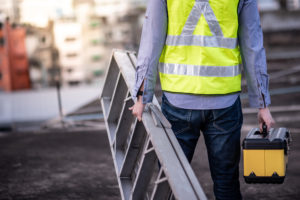 The world’s first study of long-term impacts caused by a ladder fall has found a deterioration in psychological well-being in patients for at least six months after the incident. Many people don’t realize the overall impact of a fall, but this study helps to outline the mental stress it can take.
The world’s first study of long-term impacts caused by a ladder fall has found a deterioration in psychological well-being in patients for at least six months after the incident. Many people don’t realize the overall impact of a fall, but this study helps to outline the mental stress it can take.
Among the aging population, particularly in males, ladder falls are a growing concern. The University of Queensland’s Dr. Rob Eley, who was involved in the study, said that participants who had a fall experienced sleeping problems, anxiety, depression, and pain months after checking out of the hospital.
Advertisement
“Ladder falls go far beyond that of the physical injury; they significantly impact a person’s mental health and the whole family,” Dr. Eley said.
“It’s frustrating because ladder-related falls are frequently preventable, yet they’re a common cause of injuries presented at the emergency department.”
“Our study found males over 55 years old are particularly at risk, making up more than half of all our ladder-related fall cases.”
The study involved 134 Australian residents who were admitted to the emergency room at Princess Alexandra and Nambour General Hospitals between October 2015 and October 2016 as a result of a fall from a ladder. During their time in the hospital and after, the Assessment of Quality of Life (AQoL) scale was used to measure the patient’s physical and psychological recovery over time.
The patients spent an average of five days in the hospital after being admitted. The most common injuries reported included spinal fractures, rib fractures, tibia or fibula fractures, radius or ulna fractures, pelvic fractures, and traumatic pneumothorax.
Injuries in Non-Occupational Settings
The study found that most injuries happened in non-occupational settings during home maintenance. Of those who were employed, 80 percent required at least four weeks off work, and 16 percent were unable to return or perform their normal function after six months.
Dr. Eley hopes the study highlights the need for improved safety designs and injury prevention strategies.
“Our research reinforces the need for mandated safety instructions for ladders, as well as safety features like rubber feet, hooks, extender arms, fasteners, and stabilizers,” Dr. Eley said.
“We suggest that at the place of purchase, older men are targeted to reinforce safety instructions, and perhaps are provided with mandatory stabilizing features.
Advertisement
“The community also needs to do more to educate people that it’s OK to request help or employ home service contractors to complete tasks around the home that require a ladder.
“Ladder falls are frequently preventable and our findings demonstrate the need for preventative measures to be taken.”
It only takes a moment for a ladder fall to happen, but the psychological impacts can be long-lasting. Researchers hope this study will help bring awareness to specialized rehab that patients may need after a fall.
